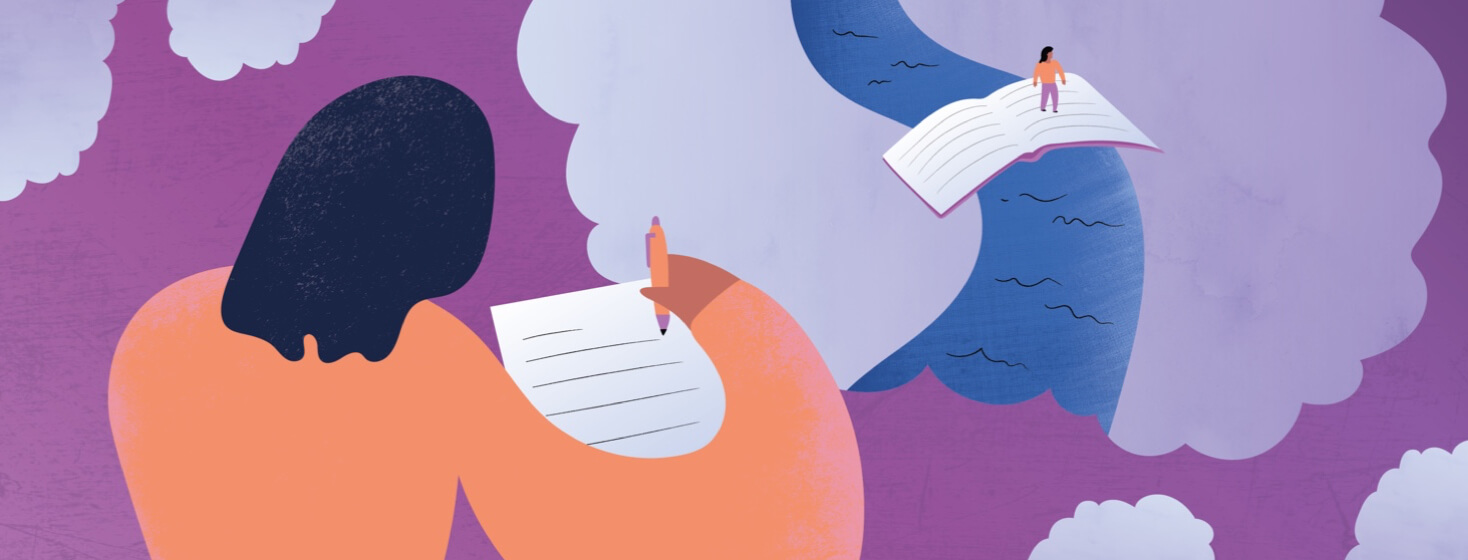Crafting a Memoir With RLS
Words are my haven. Not spoken ones — I’m not so good with them. But the written word is the place I go to unpack thoughts and deescalate the mostly non-existent catastrophes I’m so good at creating. I’ve put so many words together I’ve made a whole book. A memoir about my lived experiences with shattered mental health, grief, and an eating disorder.
With all the things that have happened in my 56 years, never did I think I’d become a published author. Daughter, mother, wife, and sister — sure. Teacher, musician, bushwalker, and wannabe traveler — absolutely. Redheaded, asthmatic, restless, insomniac. All these things seem like my identity. But "author" feels like a stranger, and now I’ve published a book. A real one. It’s been a long journey, and if there’s one thing we know about chronic sleep issues, it’s that journeys are difficult.
A journaling exercise that turned into a blog
Writing a memoir is a process. I didn’t set out to write a book.
It began as a journaling exercise. When my life snowballed into a sleepless catastrophic mess, all my other identities slipped through my fingers and I was left wondering who I was. After some gentle nudging, I picked up the metaphorical pen and paper (a.k.a. keyboard and mouse) and started writing out all those feelings that didn’t make sense. All those memories and shameful things I didn’t want to talk about.
Over time my private journaling morphed into a blog. The public sharing of my story became a part of my journey to rise from the ashes of shame. Then one day I was sent a link to a writing course, and my new identity as a writer emerged.
Doctors routinely had no answers for my illness
It was hard to tell where the chickens and egg lay — did my sleeplessness cause my mental ill-health? Or did mental ill-health cause my insomnia? Was it both? Neither? Doctors routinely had no answers. It wasn’t until I spectacularly imploded that my sleep was taken seriously.
A large array of medications were tested to manage severe RLS and insomnia. Insomnia medications often make RLS worse, so finding something that helped both was a lengthy process.
I spent hour after hour curled up writing. Constantly wiggling from one side of the couch to the other with RLS. Moving from desk to dining chair. Café to library. In the shade at the beach. Sitting on my daybed. Stretched out on my recliner. Sitting up in bed.
Coping with RLS became part of my writing process
Writing is a sedentary process, and RLS is not a sedentary condition. A lot of rearranging of my legs happened. Stretch. Wriggle. Pace. Write. Repeat.
Stretching and pacing became part of my process. While thoughts tumbled through my fingertips faster than I could keep up, the need to stretch my legs gave me time to reflect and regroup before moving on to the next outpouring.
I’m an unconventional writer. My busy mind, high anxiety, and restless legs are calmed by playing loud music. With music in the background, my legs tap and my thoughts hyperfocus. When those thoughts are productive, things go well. When everything is quiet, the noise in my head gets deafening and the incessant need to move becomes my main focus.
Writing a memoir about mental health issues is a highly emotional experience. In order to share the emotions, they have to be relived. Reliving difficult emotions is both cathartic and painful. All that emotionally charged reminiscing doesn’t support rest and relaxation. Lack of sleep became a normal part of my everyday life, and long walks to stretch my legs became a part of my writing process.
Life is nothing if not a balancing act
I put aside long weekends and days at a time to visit a cottage on a peaceful island, surrounded by echidnas, quolls, and wallabies. Sunsets, beach walks, and a hearty fire. Cups of tea and the occasional gin and tonic. A quiet space to pace and write.
Eventually, my musings developed shape and a story began to emerge. My story.
That was five years ago.
Through much trial and error, pacing, sleepless nights, manic fatigue, and hour upon endless hour staring at my laptop screen, I now have a product. Stalked by Demons, Guarded by Angels: The Girl with the Eating Disorder has been officially published. I am a bona fide author.
Life is nothing if not a balancing act, and learning to manage RLS and insomnia has been a big journey. Without the support of the medical fraternity, I wouldn’t be where I am now. In five years, I’ve transitioned from musician to writer, mother to grandmother, full-time work to semi-retired, mentally broken to healed, and utterly sleep-deprived to well-rested and still (mostly).
I can now unconditionally state I am looking forward to what the future brings.

Join the conversation